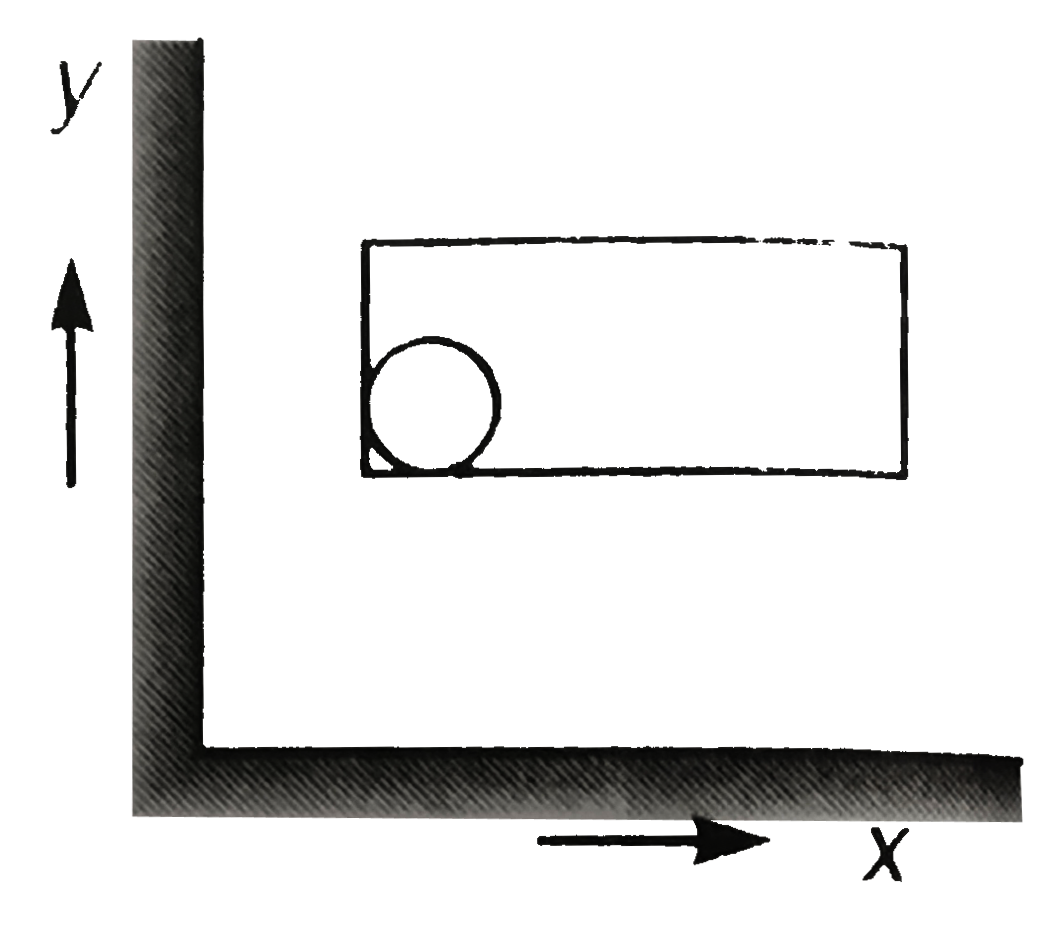A solid sphere of mass 2 kg is resting inside a cube as shown in fig. The cube is moving with a velocity →v=(5tˆi+2tˆj)ms−1. Here t is time in seconds. All surface are smooth. The sphere is at rest with respect to the cube. What is the total force exerted by the sphere on the cube?

v=5ti+2tj,¯a=dvdt=5i+2j
F=maxˆi+m(g+ay)ˆj,F=2(5i)+2[10+2]ˆj ,
F=10i+25j,F=√100+567=√676=26N
Similar Questions
A solid block of mass 2kg is resting inside a cube shown in figure The cube is moving with a velocity ˆv=5ˆi+2ˆjms−1 If the coefficient of friction between the surface of cube and block is 0.2 then the force of friction between the block and cube is

View SolutionA sphere of mass 1kg rests at one corner of a cube. The cube is moved with a velocity v=(8tˆi−2t2)ˆj, where tis time in second . The force by sphere on the cube at t=1s is (g=10m/s−2) [figure shown vertical plane of the cube]

View Solution
Knowledge Check
A body with mass 5 kg is acted upon by a force →F=(−3ˆi+4ˆj)N. If its initial velocity at t =0 is →v=6ˆi−12ˆjms−1, the time at which it will just have a velocity along the y-axis is :
A0B10sC2sD15s
Acceleration of a particle in x-y plane varies with time as a=(2tˆi+3t2ˆj)m/s2 At time t=0, velocity of particle is 2m/s along positive x direction and particle starts from origin. Find velocity and coordinates of particle at t=1s.
View SolutionA small sphere of mass 1 kg is moving with a velocity (6ˆi+ˆj)ms−1. It hits a fixed smooth wall and rebound with velocity (4ˆi+ˆj)ms−1. The coefficient of restitution between the sphere and the wall is
View SolutionAn object of mass 2 kg at rest at origin starts moving under the action of a force
→F=(3t2ˆi+4tˆj)N The velocity of the object at t = 2 s will be -
View SolutionA body with mass 5 kg is acted upon by a force →F=(−3ˆi+4ˆj)N. If its initial velocity at t =0 is →v=(6ˆi−12ˆj)ms−1, the time at which it will just have a velocity along the y-axis is :
View SolutionIn a particular crash test, a car of mass 1500 kg collies with a wall as shown in fig. The initial and final velocities on the car are →vi=−15.0ˆims−1 and →vf=5.00ˆims−1, respectively. If the collision lasts 0.150s, find the impulse caused by the collision and the average force exerted on the car.

View SolutionA body with mass 5 kg is acted upon by a force →F=(−3ˆi+4ˆj)N. If its initial velocity at t =0 is →v=6ˆi−12ˆjms−1, the time at which it will just have a velocity along the y-axis is :
View SolutionA body of mass 5 kg statrs from the origin with an initial velocity →u=(30ˆi+40ˆj)ms−1. If a constant force (−6ˆi−5ˆj)N acts on the body, the time in which the y component of the velocity becomes zero is
View Solution
